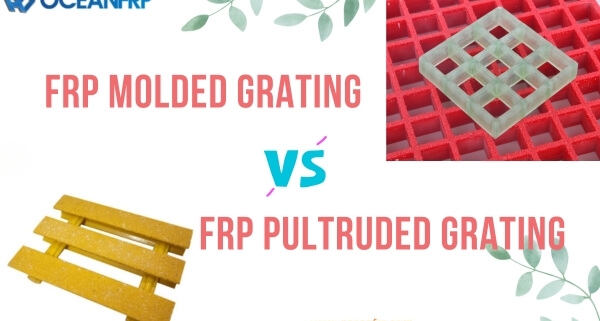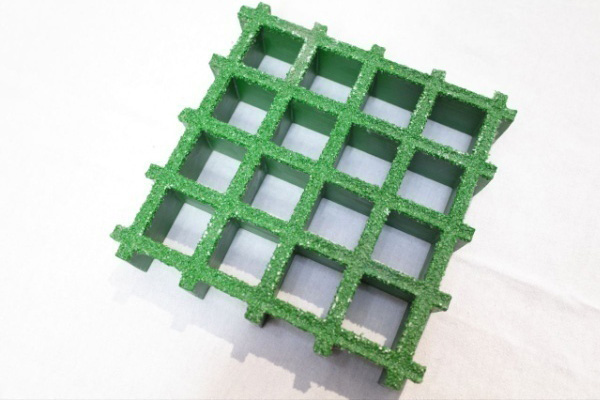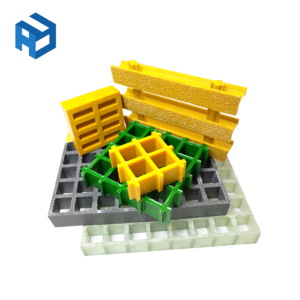FRP Molded Grating vs. FRP Pultruded Grating: A Detailed Comparison
FRP Grating Overview:
- FRP grating is also called fibreglass grating. It is strong and lasts long. Many industries use it because it does not rust.
- Choosing the Right Type:Picking the right FRP grating type is very important. It helps in making sure it works well for different uses.
- Brief Introduction:There are two main types: FRP molded grating and pultruded FRP grating. Each has its own special features and benefits.
FRP Molded Grating Overview
Composition and Manufacturing Process
Materials Used
FRP molded grating is made from fiberglass. This makes it strong and long-lasting. The fiberglass is held together by a resin, usually polyester or vinyl ester. This resin makes the grating even stronger. Sometimes, special additives like UV inhibitors and fire retardants are added to help it work better in different places.
Molding Process
Making FRP molded gratings needs careful steps to keep them good quality. First, the fiberglass is soaked in the resin mix. Then, it goes into a mold with high pressure and heat to harden. This makes a strong panel that lasts a long time.
Key Features
Corrosion Resistance
A great thing about FRP molded gratings is they don’t rust easily. The mix of fiberglass and resin stops corrosive stuff from damaging them. This makes them perfect for tough industrial areas where other materials would break down fast.
Flexibility and Impact Resistance
These gratings are very flexible and can handle impacts well. They can take heavy loads without breaking, which is why they are used where strength is needed.
Applications
Industrial Uses
In factories, FRP molded gratings are used a lot because they work so well. You find them in chemical plants, oil refineries, water treatment places, and offshore platforms where rust resistance matters most.
Commercial Uses
Besides factories, these gratings are also used in public places like walkways and platforms. They look nice and last long, making them popular for many public spots.
FRP Pultruded Grating Overview
Composition and Manufacturing Process
Materials Used
Fiberglass is the main stuff in FRP pultruded grating. It is very strong and lasts long, so many industries use it. The fiberglass strands mix with a special resin, usually polyester or vinyl ester, to make the grating even stronger.
Pultrusion Process
Making FRP pultruded grating uses a method called pultrusion. Fiberglass strands go through a resin bath to get soaked. Then, they are pulled through a hot mold to harden into shape. This makes the fibers line up in one direction, giving the grating great strength.
Key Features
Strength and Load-Bearing Capacity
A big feature of FRP pultruded grating is its amazing strength. The fibers lined up during pultrusion make it very strong and able to hold heavy loads without bending.
Lightweight and Easy Installation
Even though it’s strong, FRP pultruded grating is light compared to steel. This makes it easy to move and install, saving time and money on labor.
Applications
Industrial Uses
In tough industrial places needing strong materials, FRP pultruded grating works well. Its strength and rust resistance make it perfect for chemical plants, offshore platforms, and heavy-duty walkways.
Commercial Uses
Besides factories, you can find FRP pultruded grating in malls, public paths, and parks. It’s light and looks good, making it popular for designers who want both function and style.
Comparing FRP Molded and Pultruded Grating
Strength and Durability
FRP molded grating is very flexible. It can handle heavy hits well because it has more resin. This makes it good for places with heavy loads. FRP pultruded grating is very strong because it has more fiberglass. It is best for places needing strong materials.
- FRP molded grating: Very flexible and handles impacts well.
- FRP pultruded grating: Very strong and holds heavy loads.
Flexibility and Impact Resistance
FRP molded grating bends easily due to its high resin content. This helps in many different places. Pultruded grating is tough against hits because of its strong fiberglass make-up.
- FRP molded grating: Bends easily in many settings.
- FRP pultruded grating: Tough against impacts.
Corrosion Resistance
Both types resist rust well, but their make-up affects how they do it. Molded grating has lots of resin, which protects from rust better. Pultruded grating lasts long in tough spots due to its fiberglass design.
- FRP molded grating: Great at resisting rust.
- FRP pultruded grating: Lasts long in tough, rusty areas.
Cost and Maintenance
When picking between FRP molded grating and FRP pultruded grating, think about cost and upkeep.
- Cost:
- FRP Molded Grating: This type might cost more at first. It uses resin and fiberglass, which are pricey. But it lasts long, so it’s worth it.
- FRP Pultruded Grating: This type usually costs less to start with. Its making process is cheaper, and it uses strong fiberglass, saving money over time.
- Maintenance:
- FRP Molded Grating: Needs little care. It doesn’t rust easily, so you save time and money on fixes.
- FRP Pultruded Grating: Also needs low upkeep. It’s strong against weather, making it last long without much care.
Specific Use Cases
Knowing when to use each type helps in choosing the right one.
- High Load Capacity Requirements:
- For heavy loads like in factories or under big machines, useFRP pultruded grating. It’s very strong and holds up well.
- Flexibility and Impact Resistance:
- For places needing bendy materials that can take hits, like busy walkways, useFRP molded grating. It’s tough and flexible.
- Corrosive Environments:
- In places with lots of chemicals or near the sea, both types resist rust well. Butmolded grating has more resin for extra rust protection over time.
By knowing these differences in cost and care along with where they work best based on strength needs, you can pick the right FRP grating for your job.
FRP Molded Grating is very flexible and can handle hits well. This makes it great for many factory and public uses. FRP Pultruded Grating is super strong and holds heavy loads. It’s best for tough factory jobs. Think about what your project needs before picking one. The right choice will last long and keep things safe in rusty areas.






